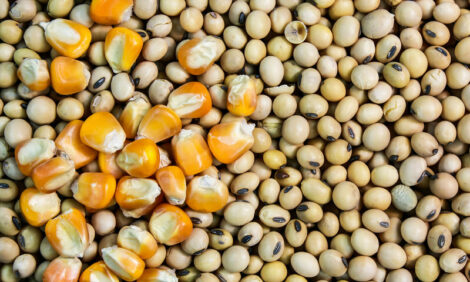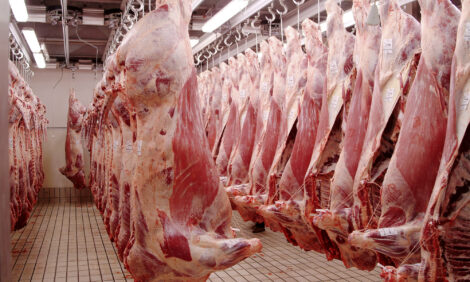



Five challenges facing swine veterinarians - and how to address them
Deborah Murray, DVM, gives her top tips on addressing some major problems being encountered by swine veterinarians.Today’s swine veterinarians are great multitaskers by necessity, said Deborah Murray, DVM, veterinary services manager, with New Fashion Pork, Jackson, Minnesota, at the 2019 American Association of Swine Veterinarians (AASV) meeting.
During the Alex Hogg Memorial Lecture at AASV, she talked about five challenges - and opportunities - that swine veterinarians face and what to do about them.
1. Time
As systems have grown, many swine veterinarians oversee thousands of sows and downstream production over a wide geographic area. She should know: New Fashion Pork is an integrated system with 59,000 sows that markets approximately 1.4 million pigs per year. It can be difficult and time-consuming to visit every farm and see every animal.
Solution:
Telemedicine, which many veterinarians have unofficially practised for years, consists of taking histories and gathering information as well as looking at necropsy pictures or video taken from a group of pigs through a phone, tablet or computer, Murray explained.
“This has been a great tool; however, telemedicine still legally requires a veterinary-client-patient relationship and knowledge of the pigs and or premise,” she said. “One could argue whether it is really necessary to be at the site when we can gather this vast amount of information, but ultimately the small observations you make, or conversations you have while at the site, can lead you to a clue to solve the root cause of the problem.
“Without rigorous training, a field manager/grower or producer may not describe what they are seeing the same way you would, leading you to a misdiagnosis or at least a delayed diagnosis.
“Technology has become an essential tool for swine veterinarians,” Murray added. “The good news is that young swine veterinarians tend to embrace technology and are generally excited to try a new app or to test out a new device.”
She cautioned that technology should “not become a substitute for being in the barn and walking the pens yourself.”
2. Young talent
Attracting and retaining young talent in the swine veterinary profession is a constant challenge. To better understand how the profession is doing in this area, Murray said that AASV members who graduated from veterinary school from 2005 to present were surveyed and asked questions related to how AASV is helping prepare new graduates for practice. A solid 84 percent of respondents either strongly agreed or agreed that AASV had helped prepare them for practice. While that’s a good sign, there is more work to be done.
Solution:
Practices should actively engage students and interns and immerse them in the business, Murray stressed.
“Armed with new ideas and the ability to see farms/records/procedures without any preconceived ideas or historic baggage, their thoughts and comments can be invaluable at improving or even recreating procedures,” Murray said. “Frequently they trigger new ideas, even with seasoned practitioners, as they assume very little and ask fundamental questions.”
She also noted the important role of mentorship in keeping new veterinarians in the profession. “Never underestimate the value that mentorship brings to these young graduates, and if you are not already a mentor, this is certainly a call to become one,” she said.
In addition to mentoring and cultivating up-and-coming talent, when asked what technologies they feel are needed to maintain or improve their level of practice over the next 15 to 20 years, they responded with a variety of ideas, including:
- Pen-side diagnostics.
- Better (and easier) data integrations and analysis.
- Autopilot vehicles.
- Telemedicine.
- Diagnostic capabilities outside of infectious disease (metabolic, nutrition, auto-immune, degenerative).
- Technology that allows for effective data consolidation and analysis.
- Robotics.
- Artificial intelligence technologies to identify issues in a barn with real-time data reporting.
- Many others associated with how the profession can continue to innovate.
3. Communication
With an ever-evolving industry in terms of genetics, nutrition, building design and disease risks, it’s a constant challenge to meet and understand a pig’s requirements. Communication between veterinarians and farm owners, managers and employees is critical for continual improvement, Murray said.
“Do we need to design our barns differently? Has feeder space and water allowance changed? Have we not only met nutritional requirements but optimised them? Do we have the research capability of measuring gain and feed conversions while also having studies large enough to take into account small differences in mortality at a statistically significant level?” she said.
“We have valuable resources to help us find answers to these questions, but have we been able to work together and build off each other’s knowledge in the most productive way?”
Solution:
“As we move forward with more and more data and information, we will need to find a way to continue to communicate this information with clients and farm staff, which is something they don’t teach in vet school,” she said.
Murray, who received the 2018 Science in Practice award (for her efforts in “demonstrating or showing promising research productivity in production and disease…”), said communication and teamwork provide a “huge opportunity” for veterinarians.
“As swine veterinarians, we may also need to learn additional languages to better communicate with our employees and staff,” she said. “Several respondents to the survey felt very strongly about this, as our farm staff has culturally changed over the years and will likely continue to do so.”
4. Consumer perception
Public perception will continue to be critical to the economic survival of producers, Murray pointed out. Each generation is further removed from the farm, so connecting with consumers to help them understand where their food comes from will become more and more difficult.
Solution:
Veterinarians and producers need to be able to explain to consumers the best management practices used on farms and how pigs are raised.
If the industry doesn’t address this problem, “we will lose consumers to protein sources like fake meat, or continue to have activist groups drive legislation,” she said. The industry has already seen initiatives that dictate alternatives to gestation stalls, which increases the cost to raise pigs. If the trend continues, it could mean loss of business if production costs become prohibitive and consumers begin to look for more affordable options.
Alternative protein sources are gaining attention, which drives home the need for producers, veterinarians and the associations that represent them to make consumer education a high priority, Murray said.
5. Feeding the world
As the population grows, agriculture will need to become more efficient, more sustainable and higher producing than ever before.
“Veterinarians will be challenged to reduce or eliminate pathogens while increasing efficiencies of food-producing animals, and they will likely have increased scrutiny on antibiotic use and pressure to reduce usage,” Murray said. “In other words, we will have to do more with less, which is certainly easier said than done.”
Solution:
Animal proteins play an important role in feeding people in both developed and developing countries. A concerted effort, not only within the US but in cooperation with other countries, will help experts address critical issues associated with food production, distribution and consumption.
The public needs to understand the role of antibiotics in animal production, and how antibiotics are a valuable tool for veterinarians as well as the animals they help protect. Feeding the world will require the input and expertise of parties from many different disciplines in a holistic approach.
“We will definitely need the help of all experts in this endeavour, including universities, researchers, industrial partners, the National Pork Board and the USDA/FDA, to name a few,” Murray said.
Face the future - and do what is right for the pig
The Veterinarian’s Oath states that these professionals are committed to “…the protection of animal health and welfare, the prevention and relief of animal suffering, the conservation of animal resources….” In the quest to maximise profit and minimise losses as well as to improve health, Murray said that sometimes the cheapest option is not the best option for the pig.
“As swine veterinarians, it is our duty to find a way to accomplish both [goals] and yet continue to keep our clients and employers in business successfully as we have done for many years,” she said. Write without paragraph marks






